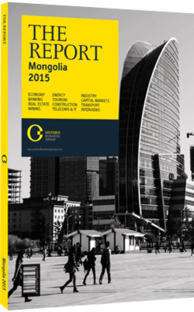Batsaikhan, Former CEO, Mongolian Railways (MTZ): Interview

Interview: P. Batsaikhan
What impact will the standard gauge bill have on plans to expand the country’s rail network?
P. BATSAIKHAN: As the state-owned enterprise responsible for implementing the government’s railway policy, MTZ will build according to the specifications set out by Parliament, whatever they may be. That said, there are various issues still to be resolved, such as how much money will be allocated to the project under the 2015 budget, which government resolutions should take precedence with respect to the project, and how rail might fit into the broader plans to develop the Tavan Tolgoi coal basin. Deciding the gauge for the railway removes a key hurdle that has prevented us from moving forward on the planned extension of the rail network, which was first introduced in 2010. Moreover, many local companies have expressed their belief that having standard gauge from Tavan Tolgoi to the Chinese border will reduce transport costs and make Mongolian coal more competitive internationally. Since the decision, we have seen increased interest by foreign companies to become involved in various activities related to the construction of future lines, which is a positive sign.
What is the status of the project, and what are your expectations in terms of completion?
BATSAIKHAN: It is important to remember the standard gauge decision only applies to a portion of the overall expansion plans for the country’s rail network, which is currently around 1800 km in length. The original proposal announced in 2010 was broken up into several phases. Phase one will extend from Dalanzadgad-Tavan Tolgoi through Sainshand and Khuut to Choibalsin. Phase two includes four sections totalling 800 km, including a line that will connect Tavan Tolgoi (at Ukhaa Khudag) to the Chinese border at Gashuun Sukhait, as well as lines from Khuut to Bichigt and Numrug, both on the Chinese border. Phase three, for which construction has yet to be approved, will run west from the first two phases with multiple spur lines to China and Russia. A 2012 resolution approved the construction of phase one and two, together nearly 1800 km in length. As a result of this decision, standard gauge will apply to two lines running to the Chinese border, the track from Tavan Tolgoi being the primary one, while broad gauge will apply to the east-west line that intersects with the existing broad-gauge north-south line.
Original estimates had the first two phases being completed by 2015, but given delays, a more reasonable estimate for the project would be 2020. We have already made progress on the line from Tavan Tolgoi to the border. Roughly 80% of the earthwork has been completed for the 225-km track and more than half of the bridge and covered works, including animal crossings and culverts, have already been executed. However, further work is highly dependent on the investment side, as well as other factors. For instance, the east-west line servicing Sainshand is closely linked with the proposal to erect an industrial park to process the country’s minerals, which has yet to be approved.
To what extent can foreign companies become involved in the development of the network?
BATSAIKHAN: We have received letters of interest from many multinational companies, and some are already involved. Deutsche Bahn International, for instance, is working on the construction of the Tavan Tolgoi line as a technical consultant and supervisor, and a number of other foreign companies have shared their expertise in the development and execution phases of the project, including Samsung C&T, McKinsey, BNP Paribas, Nippon Koei and Sidley Austin LLP. At the moment we are looking at possible ways to finance future stages of the project as separate packages based on gauge. These will be open to foreign investment through the establishment of special purpose vehicles. We expect to finalise these plans and open them up to bids in the near future.
You have reached the limit of premium articles you can view for free.
Choose from the options below to purchase print or digital editions of our Reports. You can also purchase a website subscription giving you unlimited access to all of our Reports online for 12 months.
If you have already purchased this Report or have a website subscription, please login to continue.

